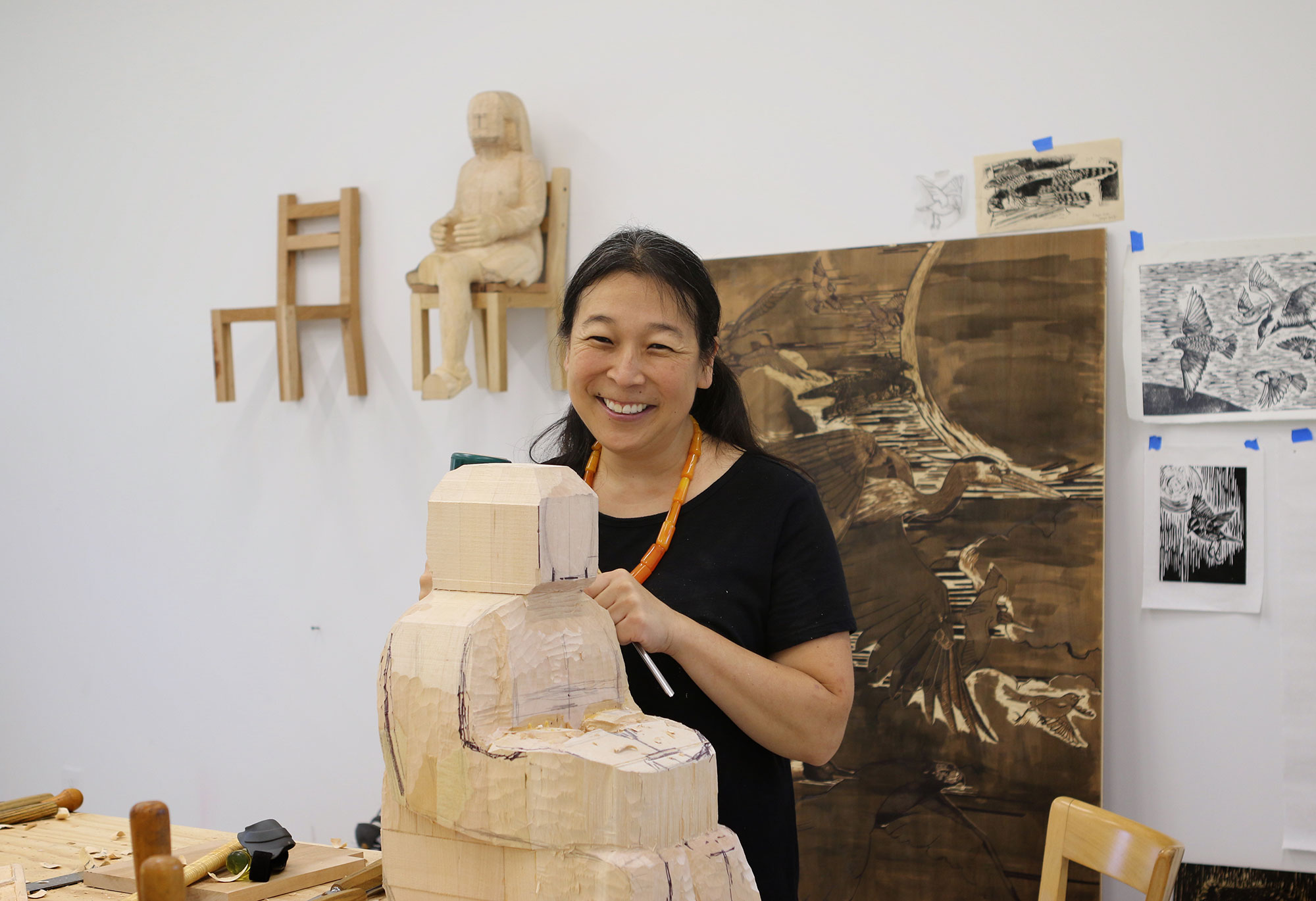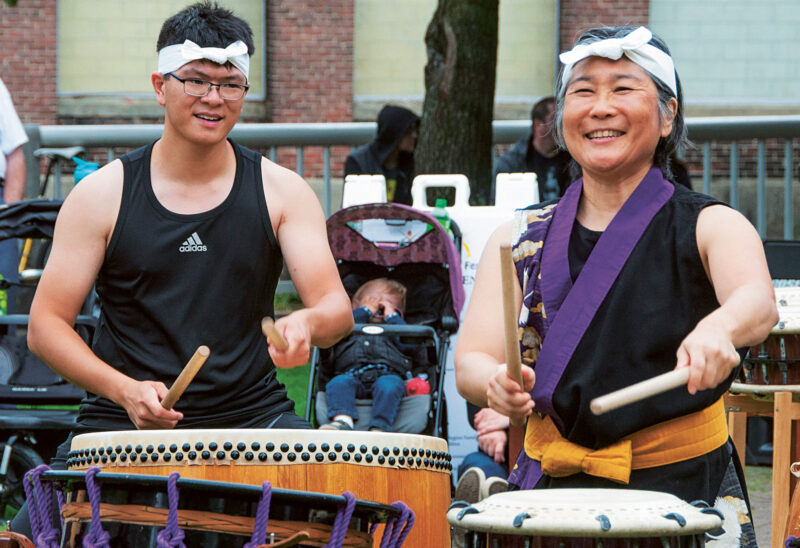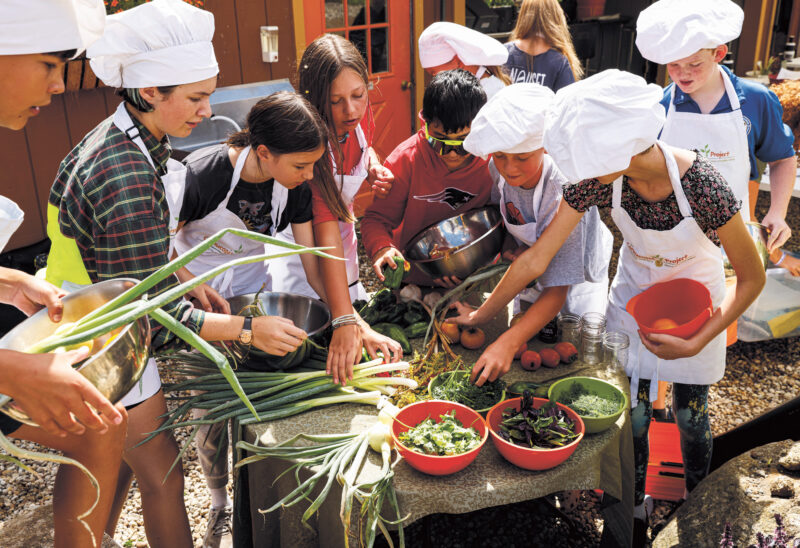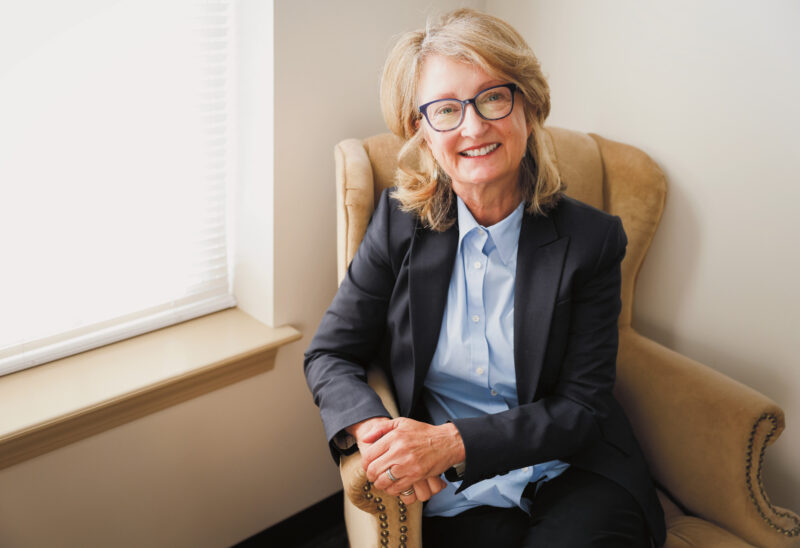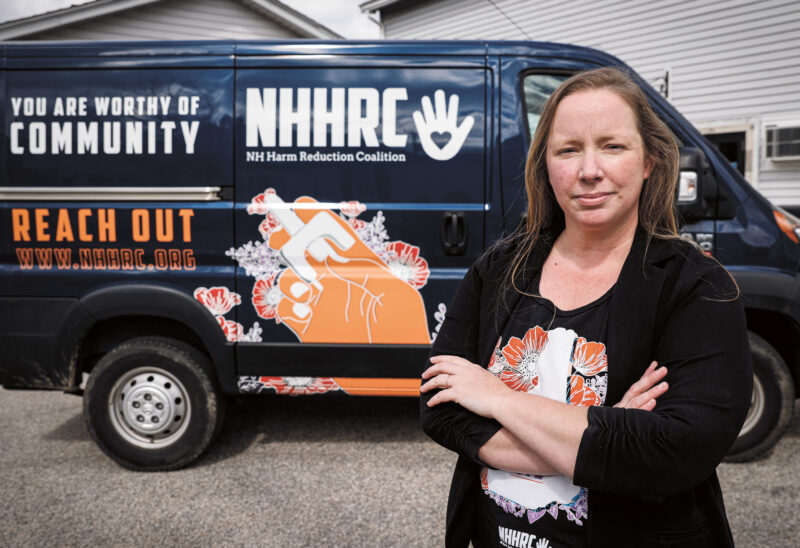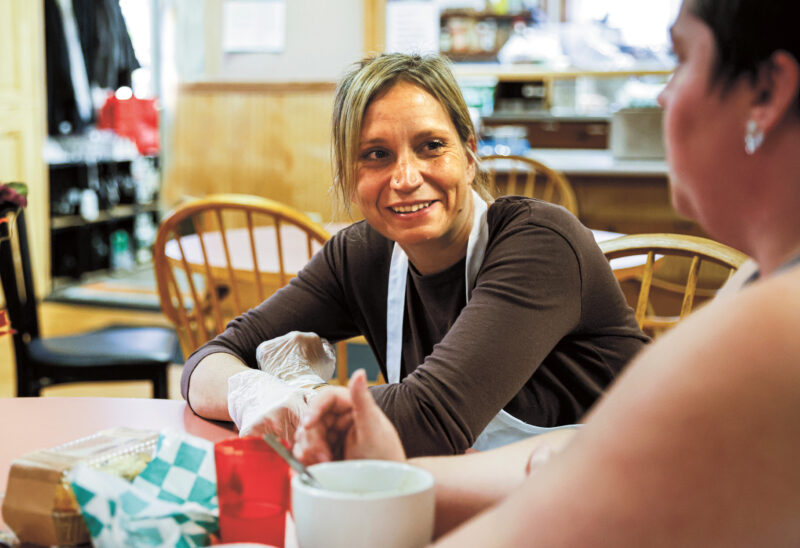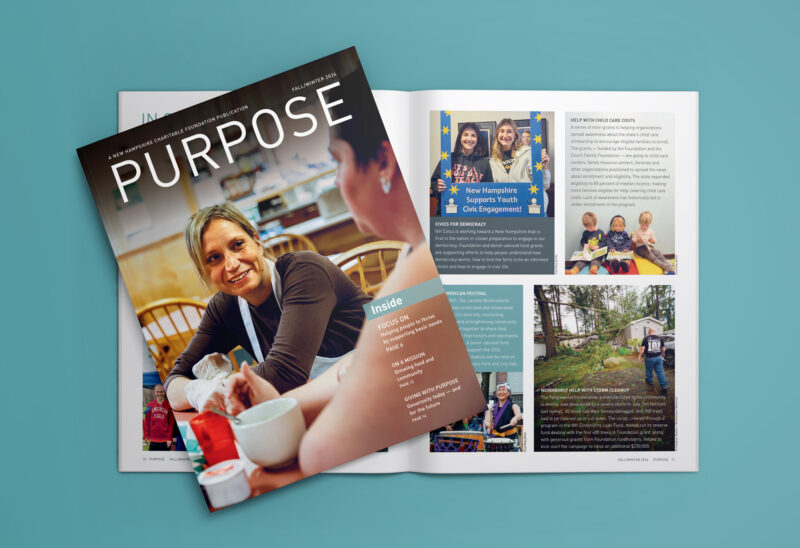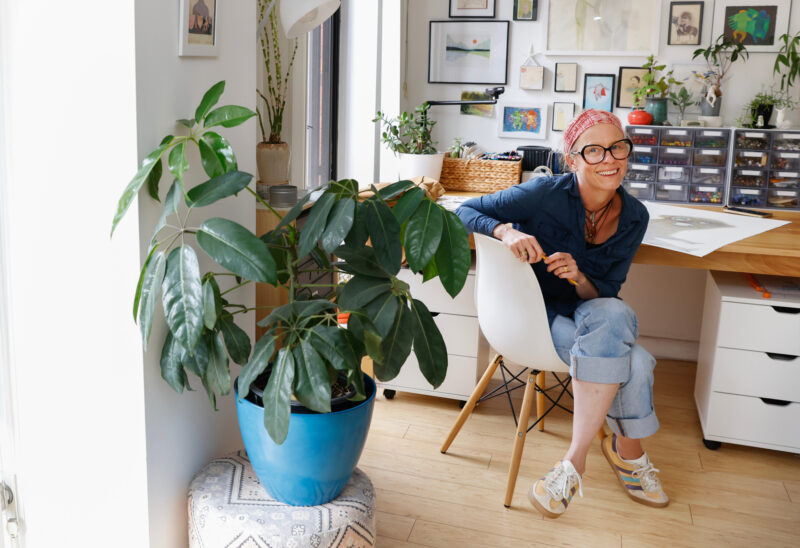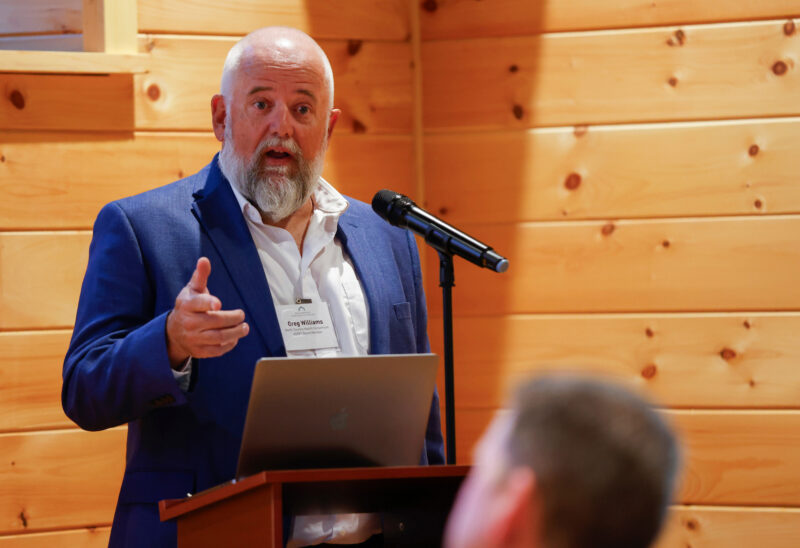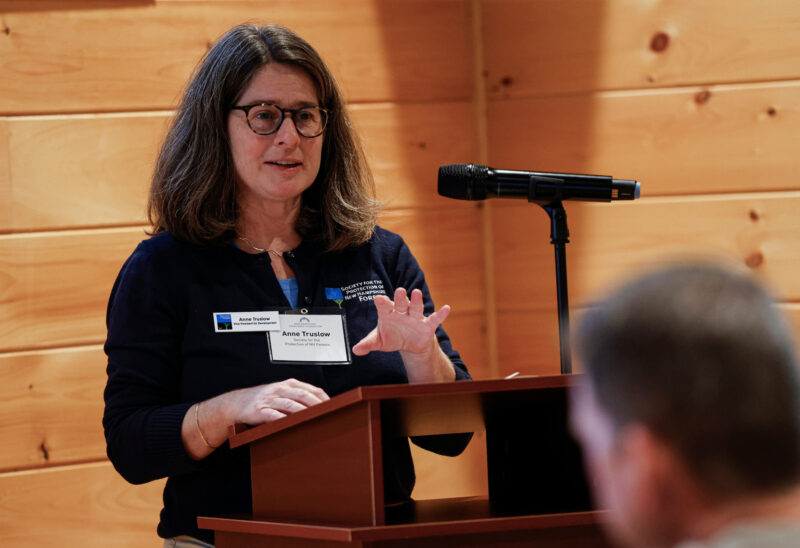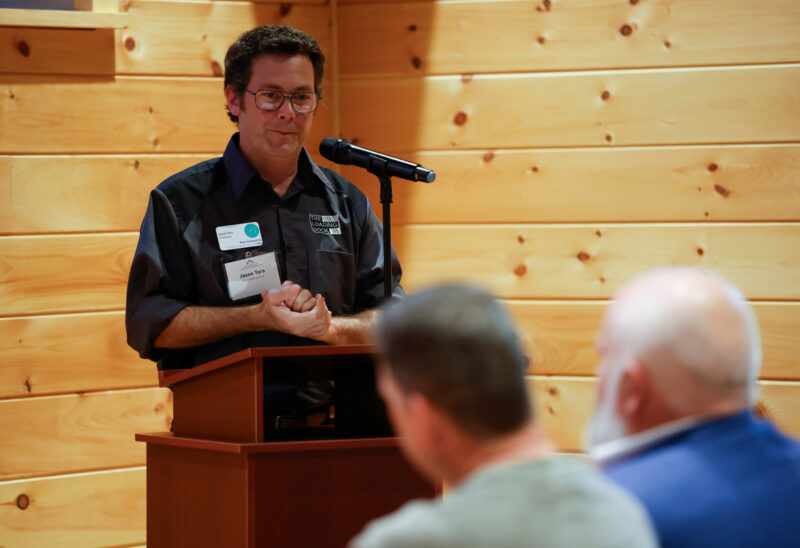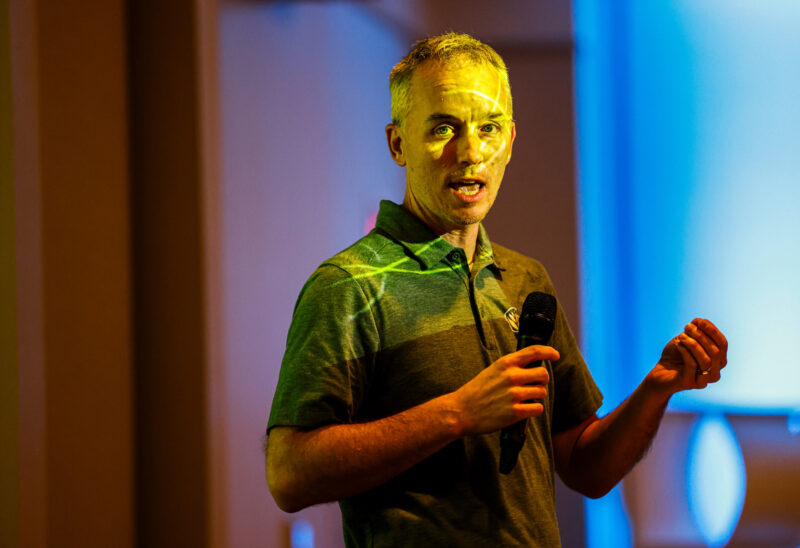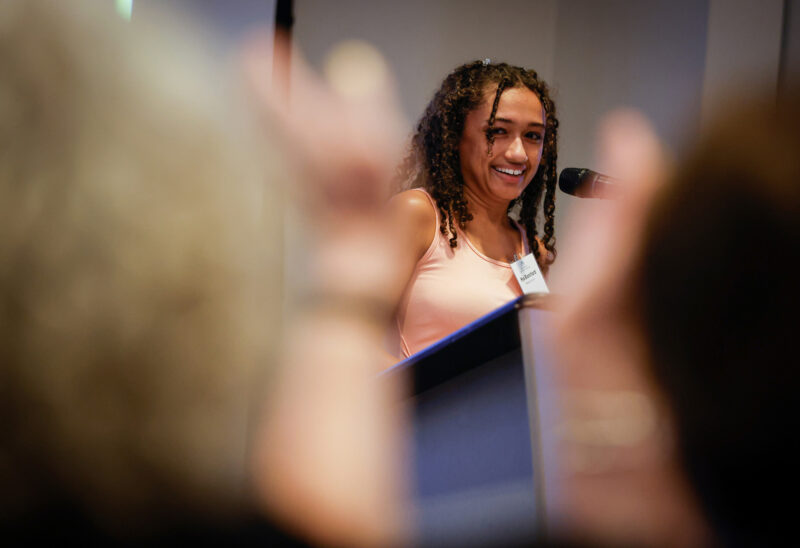When Sachiko Akiyama got the phone call, she knew just what to do: She went to the lumber yard.
The call announced that Akiyama had been selected to receive the 2018 Piscataqua Region Artist Advancement Grant from the New Hampshire Charitable Foundation.
She did not wait for the check to come.
She got in the car and procured a hundred board-feet of basswood. She took it home to the studio behind her Portsmouth house and layered and glued it into one 2’x2x5’ block. And then she fired up the chainsaw.
Akiyama is a sculptor and an assistant professor of sculpture at the University of New Hampshire. The $25,000 annual grant — one of the largest unrestricted grants awarded to a single artist in the country — is, she said, “life-changing.”
That block of basswood has now been sawn down to a rough human form (its head and shoulders are emergent) and is on its way to becoming one of Akiyama’s signature sculpted figures — a process that will take hundreds of hours and thousands of chisel-strokes.
It will become part of an installation in which viewers will be surrounded by art — near-life-size figures, figures in chairs mounted on the walls, woodcut murals. She had been yearning to work “big,” to be able to afford the basswood and expensive butternut to sculpt into multiple, near-life-size pieces.
The grant makes that possible.
“It just changes the whole face of what I can do,” she said. “It will allow me to make bigger strides in a shorter amount of time.”
Akiyama was a runner-up for the grant last year, and put the money toward converting the two-car garage behind her Portsmouth home into a studio. (Runners-up for the award this year were Tara Lewis and Jocelyn Toffic.) The fund from which the annual grant is made was created at the Charitable Foundation in 2001 by a group of generous people who wanted to help cultivate the region’s arts community, boost artists’ careers and help keep them living and working in the area. It may be used for anything an artist needs to advance her work.
Akiyama will put the money toward completing her studio — winterizing, installing a dust-control system and a pulley system to move the large, heavy pieces up and down from the second floor — as well as on materials, hiring labor to do some of the rough chain-saw work, and traveling to New York to develop stronger relationships with galleries where her work might be shown and sold.
She said it is liberating to know that the grant money must be dedicated exclusively to advancing her art.
“If I sell a piece, and get some money,” she said, “’I think ‘oh, I should fix my roof.’ It’s so nice to know that this is earmarked.”
Akiyama often works concurrently on five or six pieces. Her new studio makes that possible — and gives her room to step back and get a good view of what she is working on. She works primarily in wood, incorporating other materials, including resin, glass, metals and clay.
Her work retains an organic quality, in which the chisel-marks of the artist are not burnished away. “The tool marks left on the completed sculptures reveal the time-consuming, repetitive process of how the forms gradually emerged into being, similar to how a thought or memory can form,” she has written.
She is experimenting with two-dimensional images drawn or painted on three-dimensional forms, and with creating environments for sculpture with woodblock prints.
Her human and animal figures have a power and a stillness. The demand attention — but gently. They seem, inasmuch as inanimate objects can, deeply present.
Her human figures — frequently self-portraits — are at about 3/4 scale.
“I like that it feels like it is in your space — but not exactly in the same world,” she said.
Many figures are depicted in close connection with nature. One figure embraces a heron. Another kneels on the back of a bear. Another sits, knees tucked under chin, riding the crest of a wave in a tiny bowl-like boat. Others are more surreal: A figure with a mountain range atop its neck, a bent woman with a copse of bird-filled trees growing from her back.
“The way I explain things is through the natural world,” she said.
Akiyama, who also has deep interest in science, reads widely — about migrating birds, geology, the mythology of early cultures.
Recent work has included woodcuts of groups of migrating birds — depicting flocks of multiple species. Each creature is rendered in lines at once delicate and confident, and true to nature. It is the incongruity of the grouping that invites questions.
“I like the commonality, that they all have this thing in common,” she said. “I don’t want to be preachy, I just want to present these ideas.”
Symbols recur in her work — birds, boats. All her figures are either self-portraits or renderings of family members, or ancestors. Her grandfather Kenso Okamura, whom she never met, was a coastal-dweller in Japan who taught himself to navigate by the stars. He appears in her work frequently.
Her titles are both poetic — “From Root to Sky,” “The Blue of Distance,” “I Remember What I Did Not See,” “Four Corners of the Floating World” — and poetically ambiguous.
“I have trouble with titles, because I don’t want to shut the pieces down or proscribe how someone is looking at things,” she said. “I don’t want it to be illustrative, I want people to feel a sense of humanity.”
Akiyama started sculpting around the time she learned her ABCs.
A “wood station” in her kindergarten room became the object of her obsession. Her tiny hands sawed and hammered and built a horse (which the family dog ate.) That Christmas, she asked her parents for tools, and for a roll of Scotch tape. She took the tools into the cellar and built things. And she sculpted the entire roll of Scotch tape — “I just thought it was the best material” — into a ball. Her parents were not impressed.
Akiyama did not set out to be an artist.
She enrolled in a pre-med program in college, dabbling here and there in art classes. She graduated and taught high school science for three years, and kept studying for and planning to take the Medical College Admission Test — and then letting the testing dates go by.
Eventually, she enrolled in art school.
Akiyama, who taught sculpture at Boston University before coming to UNH, has had solo exhibitions from Boston to Hamamatsu, Japan. Her work is part of the collection at the DeCordova Museum and Sculpture Park in Lincoln, Massachusetts. An exhibition of her work, along with that of Lewis and Toffic, will open at the UNH Museum of Art in April, 2019; she also has upcoming exhibitions in Vermont and Massachusetts.
For the record, her parents (though unimpressed by that Scotch tape ball) are very much in support of her career as an artist.
Now, she teaches during the week and spends nights and weekends and summers working in the studio.
“I want to emphasize how grateful I am,” she said of the artist advancement grant. Such support for the arts, “is unusual in this country,” she added — pointing, by contrast, to an abundance of public support for the arts in neighboring Canada. “It is harder to be an artist here. Everyone is trying to figure out how to pay for health insurance and such. It’s nice to know there are people out there who value this, and who care enough to help in such a generous way.”

